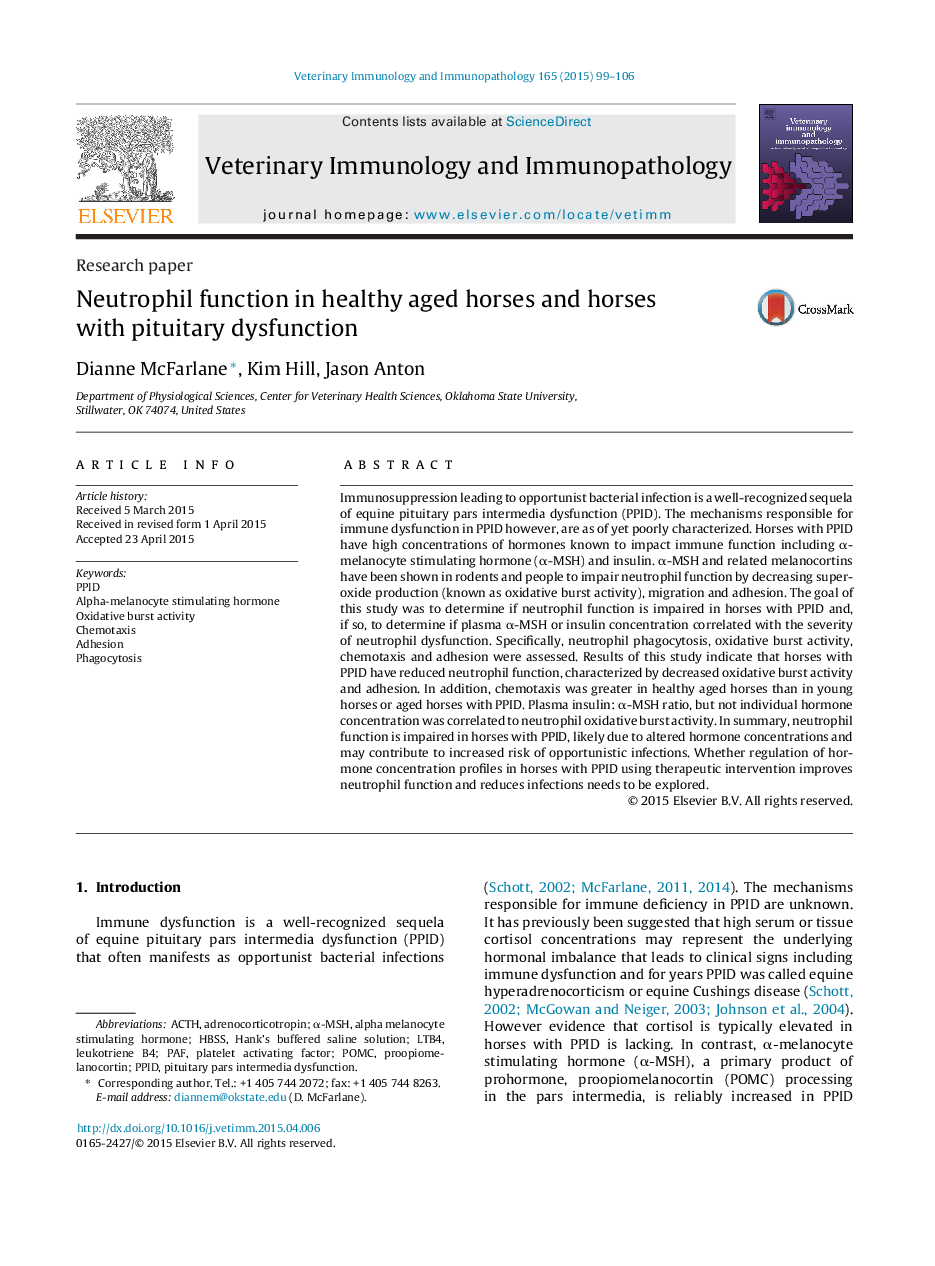| Article ID | Journal | Published Year | Pages | File Type |
|---|---|---|---|---|
| 5796653 | Veterinary Immunology and Immunopathology | 2015 | 8 Pages |
Immunosuppression leading to opportunist bacterial infection is a well-recognized sequela of equine pituitary pars intermedia dysfunction (PPID). The mechanisms responsible for immune dysfunction in PPID however, are as of yet poorly characterized. Horses with PPID have high concentrations of hormones known to impact immune function including α-melanocyte stimulating hormone (α-MSH) and insulin. α-MSH and related melanocortins have been shown in rodents and people to impair neutrophil function by decreasing superoxide production (known as oxidative burst activity), migration and adhesion. The goal of this study was to determine if neutrophil function is impaired in horses with PPID and, if so, to determine if plasma α-MSH or insulin concentration correlated with the severity of neutrophil dysfunction. Specifically, neutrophil phagocytosis, oxidative burst activity, chemotaxis and adhesion were assessed. Results of this study indicate that horses with PPID have reduced neutrophil function, characterized by decreased oxidative burst activity and adhesion. In addition, chemotaxis was greater in healthy aged horses than in young horses or aged horses with PPID. Plasma insulin: α-MSH ratio, but not individual hormone concentration was correlated to neutrophil oxidative burst activity. In summary, neutrophil function is impaired in horses with PPID, likely due to altered hormone concentrations and may contribute to increased risk of opportunistic infections. Whether regulation of hormone concentration profiles in horses with PPID using therapeutic intervention improves neutrophil function and reduces infections needs to be explored.
